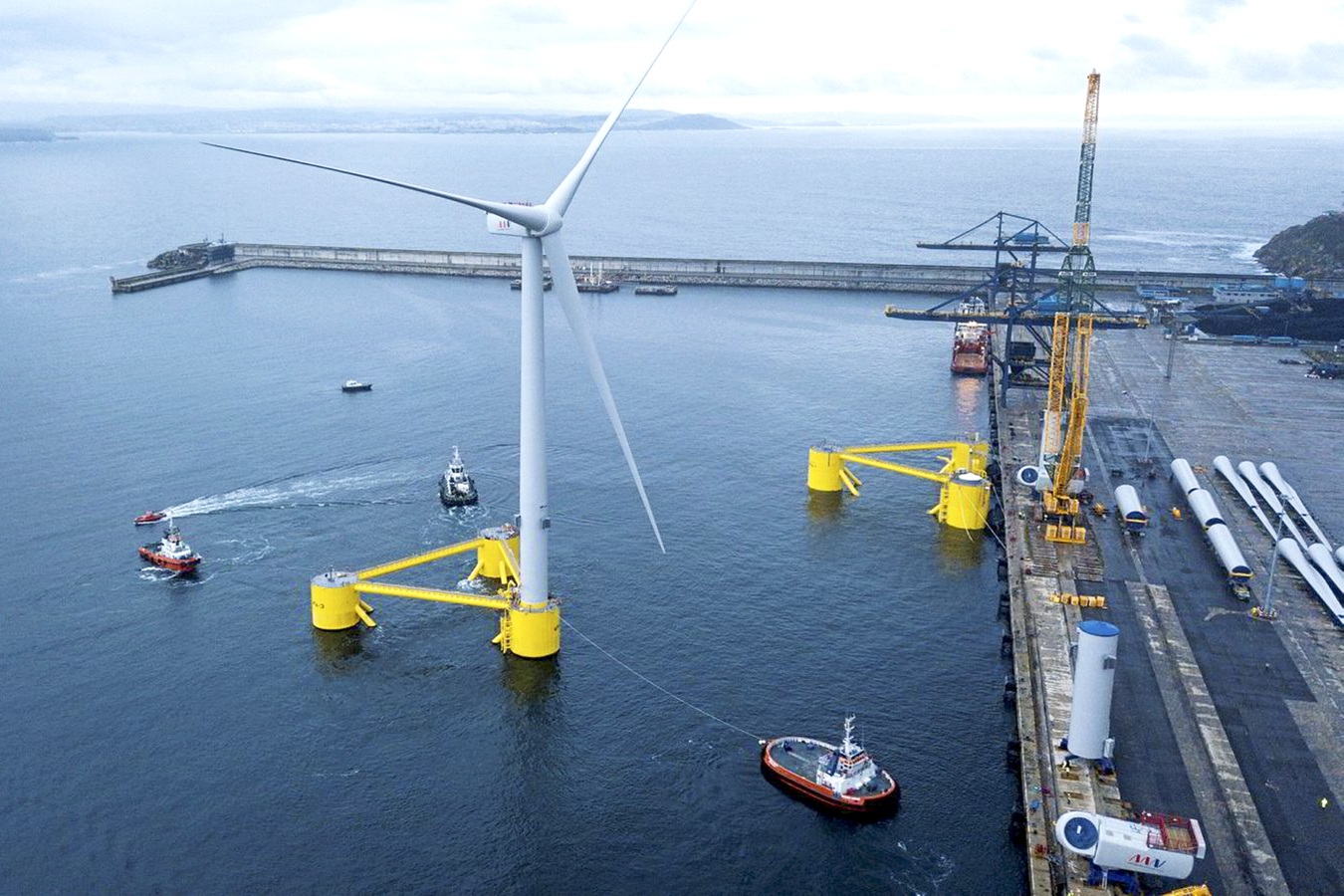
Tên sách: Wind Energy Handbook 2nd edition
Tác giả : Tony Burton, David Sharpe, Nick Jenkins, Ervin Bossanyi
Nhà xuất bản: John Wiley & Sons
Năm xuất bản: 2011
Mã ISBN: 0470699752
Định dạng: PDF
Số trang: 780
Dung lượng: 30,8 MB
Named as one of Choice’s Outstanding Academic Titles of 2012
Every year, Choice subject editors recognise the most significant print and electronic works reviewed in Choice during the previous calendar year. Appearing annually in Choice’s January issue, this prestigious list of publications reflects the best in scholarly titles and attracts extraordinary attention from the academic library community.
The authoritative reference on wind energy, now fully revised and updated to include offshore wind power
A decade on from its first release, the Wind Energy Handbook, Second Edition, reflects the advances in technology underpinning the continued expansion of the global wind power sector. Harnessing their collective industrial and academic expertise, the authors provide a comprehensive introduction to wind turbine design and wind farm planning for onshore and offshore wind-powered electricity generation.
The major change since the first edition is the addition of a new chapter on offshore wind turbines and offshore wind farm development. Opening with a survey of the present state of offshore wind farm development, the chapter goes on to consider resource assessment and array losses. Then wave loading on support structures is examined in depth, including wind and wave load combinations and descriptions of applicable wave theories. After sections covering optimum machine size and offshore turbine reliability, the different types of support structure deployed to date are described in turn, with emphasis on monopiles, including fatigue analysis in the frequency domain. Final sections examine the assessment of environmental impacts and the design of the power collection and transmission cable network.
New coverage features:
turbulence models updated to reflect the latest design standards, including an introduction to the Mann turbulence model extended treatment of horizontal axis wind turbines aerodynamics, now including a survey of wind turbine aerofoils, dynamic stall and computational fluid dynamics developments in turbine design codes techniques for extrapolating extreme loads from simulation results an introduction to the NREL cost model comparison of options for variable speed operation in-depth treatment of individual blade pitch control grid code requirements and the principles governing the connection of large wind farms to transmission networks four pages of full-colour pictures that illustrate blade manufacture, turbine construction and offshore support structure installation
Firmly established as an essential reference, Wind Energy Handbook, Second Edition will prove a real asset to engineers, turbine designers and wind energy consultants both in industry and research. Advanced engineering students and new entrants to the wind energy sector will also find it an invaluable resource.
NỘI DUNG
1 Introduction
1.1 Historical development
1.2 Modern wind turbines
1.3 Scope of the book
2 The wind resource
2.1 The nature of the wind
2.2 Geographical variation in the wind resource
2.3 Long-term wind speed variations
2.4 Annual and seasonal variations
2.5 Synoptic and diurnal variations
2.6 Turbulence
2.7 Gust wind speeds
2.8 Extreme wind speeds
2.9 Wind speed prediction and forecasting
2.10 Turbulence in wakes and wind farms
2.11 Turbulence in complex terrain
3 Aerodynamics of horizontal axis wind turbines
3.1 Introduction
3.2 The actuator disc concept
3.3 Rotor disc theory
3.4 Vortex cylinder model of the actuator disc
3.5 Rotor blade theory (blade-element/momentum theory)
3.6 Breakdown of the momentum theory
3.7 Blade geometry
3.8 The effects of a discrete number of blades
3.9 Stall delay
3.10 Calculated results for an actual turbine
3.11 The performance curves
3.12 Constant rotational speed operation
3.13 Pitch regulation
3.14 Comparison of measured with theoretical performance
3.15 Variable speed operation
3.16 Estimation of energy capture
3.17 Wind turbine aerofoil design
Appendix A3 lift and drag of aerofoils
A3.1 Definition of drag
A3.2 Drag coefficient
A3.3 The boundary layer
A3.4 Boundary layer separation
A3.5 Laminar and turbulent boundary layers
A3.6 Definition of lift and its relationship to circulation
A3.7 The stalled aerofoil
A3.9 Aerofoil drag characteristics
A3.10 Cambered aerofoils
4 Further aerodynamic topics for wind turbines
4.1 Introduction
4.2 The aerodynamics of turbines in steady yaw
4.3 The method of acceleration potential
4.4 Unsteady flow
4.5 Quasi-steady aerofoil aerodynamics
4.6 Dynamic stall
4.7 Computational fluid dynamics
5 Design loads for horizontal axis wind turbines
5.1 National and international standards
5.2 Basis for design loads
5.3 Turbulence and wakes
5.4 Extreme loads
5.5 Fatigue loading
5.6 Stationary blade loading
5.7 Blade loads during operation
5.8 Blade dynamic response
5.9 Blade fatigue stresses
5.10 Hub and low speed shaft loading
5.11 Nacelle loading
5.12 Tower loading
5.13 Wind turbine dynamic analysis codes
5.14 Extrapolation of extreme loads from simulations
Appendix 5: dynamic response of stationary blade in turbulent wind
A5.1 Introduction
A5.2 Frequency response function
A5.3 Resonant displacement response ignoring wind variations along the blade
A5.4 Effect of across-wind turbulence distribution on resonant displacement response
A5.5 Resonant root bending moment
A5.6 Root bending moment background response
A5.7 Peak response
A5.8 Bending moments at intermediate blade positions
6 Conceptual design of horizontal axis wind turbines
6.1 Introduction
6.2 Rotor diameter
6.3 Machine rating
6.4 Rotational speed
6.5 Number of blades
6.6 Teetering
6.7 Power control
6.8 Braking systems
6.9 Fixed speed, two speed or variable speed
6.10 Type of generator
6.11 Drive train mounting arrangement options
6.12 Drive train compliance
6.13 Rotor position with respect to tower
6.14 Tower stiffness
6.15 Personnel safety and access issues
7 Component design
7.1 Blades
7.2 Pitch bearings
7.3 Rotor hub
7.4 Gearbox
7.5 Generator
7.6 Mechanical brake
7.7 Nacelle bedplate
7.8 Yaw drive
7.9 Tower
7.10 Foundations
8 The controller
8.1 Functions of the wind turbine controller
8.2 Closed loop control: issues and objectives
8.3 Closed loop control: general techniques
8.4 Closed loop control: analytical design methods
8.5 Pitch actuators (see also, Chapter 6 Section 6.7.2)
8.6 Control system implementation
9 Wind turbine installations and wind farms
9.1 Project development
9.2 Landscape and visual impact assessment
9.3 Noise
9.4 Electromagnetic Interference
9.5 Ecological assessment
10 Wind energy and the electric power system
10.1 Introduction
10.2 Wind farm power collection systems
10.3 Earthing (grounding) of wind farms
10.4 Lightning protection
10.5 Connection of wind generation to distribution networks
10.6 Power system studies
10.7 Power quality
10.8 Electrical protection
10.9 Distributed generation and the Grid Codes
10.10 Wind energy and the generation system
Appendix A10 Simple calculations for the connection of wind turbines
A10.1 The Per-unit system
A10.2 Power flows, slow voltage variations and network losses
11 Offshore wind turbines and wind farms
11.1 Development of offshore wind energy
11.2 The offshore wind resource
11.3 Design loads
11.4 Machine size optimisation
11.5 Reliability of offshore wind turbines
11.6 Support structures
11.7 Environmental assessment of offshore wind farms
11.8 Offshore power collection and transmission
11.9 Operation and access
Appendix A11
References for table A11
Index
Xem thử tại: Google Books


